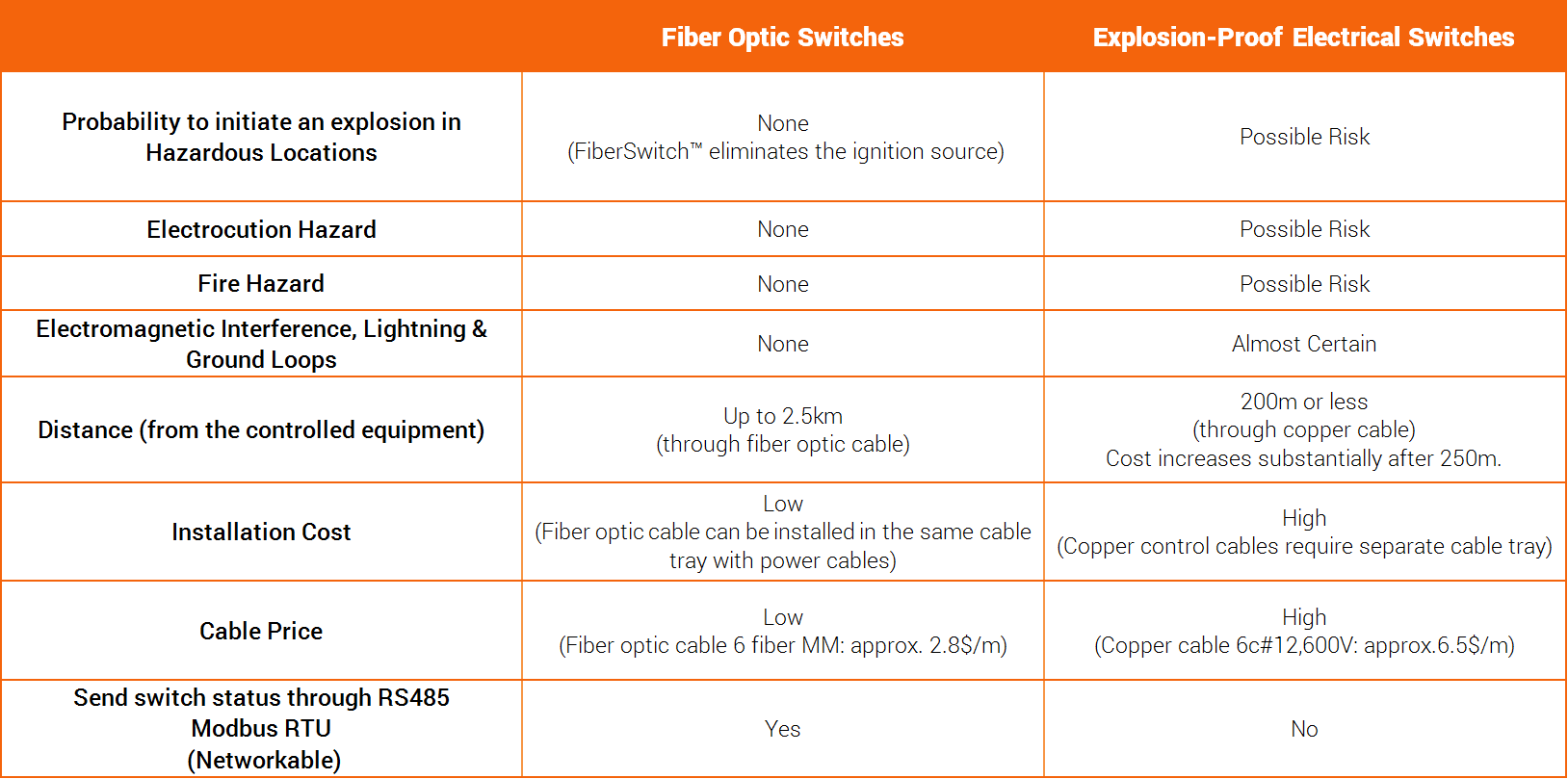
Cost Comparison
Cost analysis shows that the cost of an optical remote control system is considerably less than the cost of a classical system using copper cables in hazardous areas. Fiber optic cable is two to three times cheaper than the copper equivalent and this translates to thousands of dollars in savings for distances up to 2.5 kilometers.
There are also additional cost savings for the end user, as the fiber optic cables can be installed in the same cable tray with the power cables regardless of the voltage level (600V, 5KV, 15KV, etc).


Safety
In addition to the cost advantage, an optical remote control using fiber optic is much safer than a classical system using copper wires for the following reasons:
• Fiber Optic Switches are perfectly suitable for hazardous applications as optical signals do not produce sparks. The major concern of the existing control stations using factory sealed pushbuttons is that there are no methods in place to check the integrity of the seal over the pushbutton's life span. If the seal fails, an explosion may occur at any time. The safety of the Fiber Optic Switch does not rely on any seals or other components, making it absolutely safe in hazardous areas.
• A fiber optic system is absolutely safe for personnel as there is no electrocution hazard.
• Fiber optics eliminate the hazard of short circuits which can generate fire.
Other Advantages
There are also numerous other advantages in using a fiber optic system instead of copper:
• Fiber optic cable transmits signals over longer distances than copper.
• Fiber optic cable is also smaller in diameter and weighs less than its copper counterpart, making the installation cheaper (smaller cable trays, smaller steel supports, etc).
• Fiber optics are immune to RFI (radio frequency interference) and EMI (Electromagnetic Interference) making them ideal for applications where close proximity to electronic devices can cause RFI and EMI disruption.
• Fiber optic cables can be installed in far more places than copper cables. They can run next to power lines or they can be put in the same cable tray with power cables. If copper cables are installed, a dedicated cable tray to run the control and signal cables is required.
• Fiber optic cabling uses less power and provides less signal degradation than copper cables.
• A real benefit of a fiber optic system is the fact that it doesn’t have ground loops.
